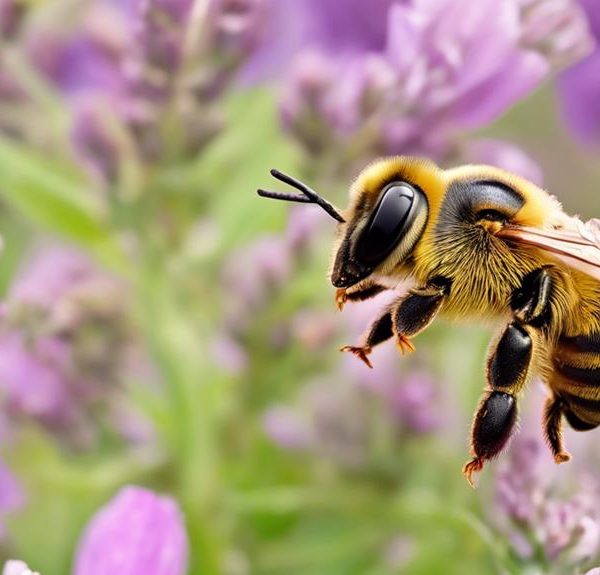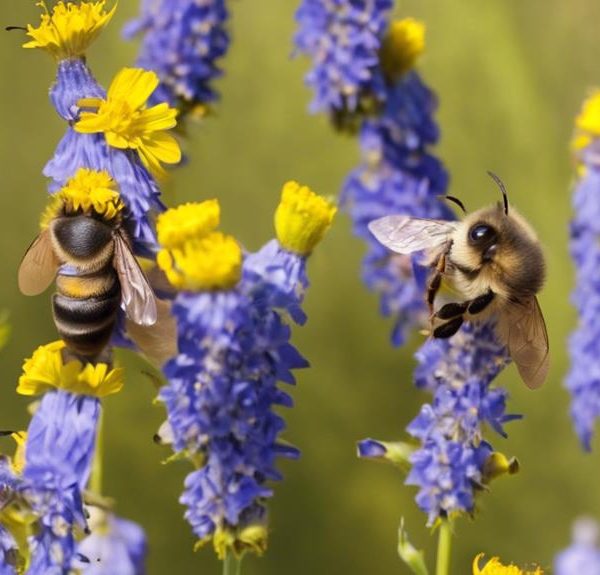Sneaky and survivalist, the Leafcutter Cuckoo Bee thrives on intrigue; discover its fascinating world of deception and nest robbery.
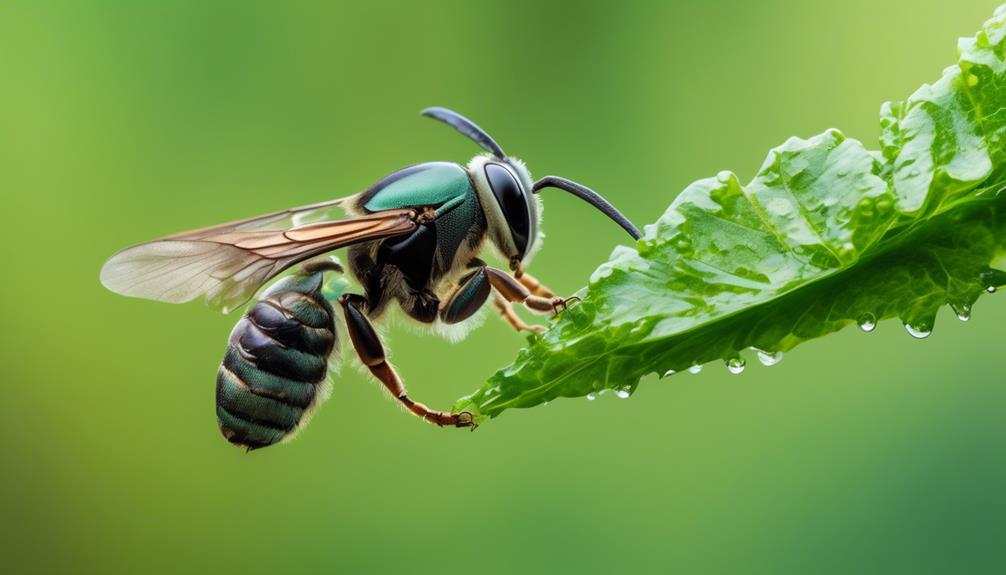
Leafcutter Cuckoo Bee
Imagine you're a practiced thief, silently slipping into a home to lay claim to another's hard work. This isn't a tale from a crime novel, but rather a glimpse into the life of the Leafcutter Cuckoo Bee.
You see, these bees don't bother building their own nests or foraging for pollen. Instead, they're crafty intruders, laying their eggs in the nests of unsuspecting Leafcutter Bees.
But what happens next? What makes this tiny creature's behavior so intriguing? Let's explore further into their buzzing world of deception and survival.
Key Takeaways
- Leafcutter Cuckoo Bees exhibit kleptoparasitism, relying on the labor of other bees, particularly Leafcutter bees.
- They lay their eggs in the nests of Leafcutter bees, engaging in brood parasitism and consuming the host's resources.
- The cuckoo bees have evolved excellent stealth abilities, rapid egg-laying, and sharp mandibles to aid in their parasitic lifestyle.
- Their interaction with Leafcutter bees reflects the complex interplay of survival strategies in nature and potentially controls the Leafcutter population.
Understanding Leafcutter Cuckoo Bee's Behavior
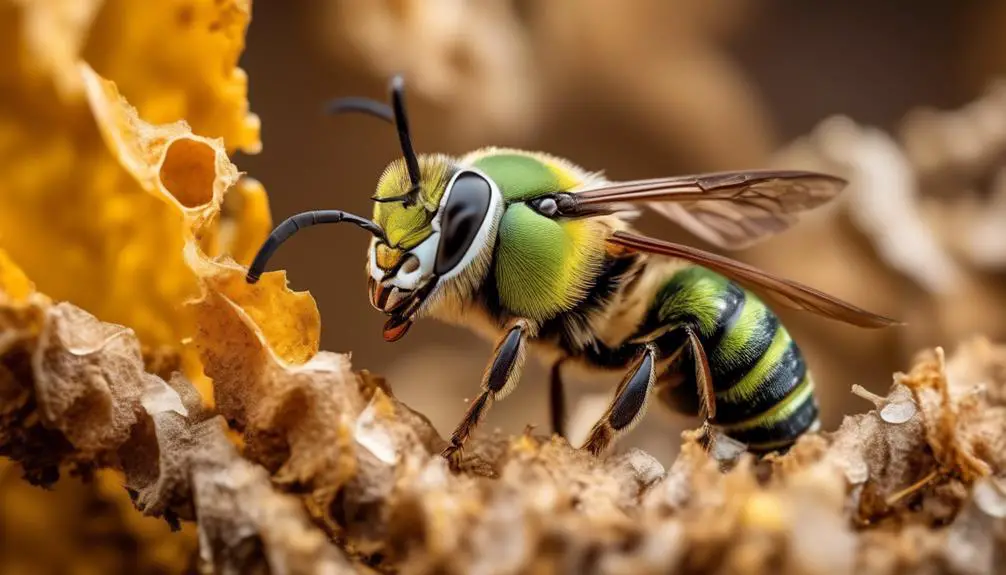
While observing the Leafcutter Cuckoo Bee, you'll notice its distinctive behavior of sneaking into the nests of other bees, a unique survival strategy that exemplifies its parasitic nature. This behavior, known scientifically as 'kleptoparasitism', is a crafty evolutionary adaptation.
You'll observe that these bees don't build their own nests or care for their offspring. Instead, they rely on the labor of other bees, particularly the Leafcutter bee species, to do this work for them.
When the host bee leaves its nest, the Cuckoo Bee quickly flies in, lays its eggs and departs. The host bee returns, unsuspecting, and continues to provision the nest with pollen and nectar. The Cuckoo Bee's eggs hatch first, and the larvae consume the food intended for the host's offspring. This parasitic strategy allows the Cuckoo Bee to save energy and resources by exploiting the hard work of its host.
Understanding this behavior is key in comprehending the survival strategies of many parasitic insects. It's a fascinating glimpse into an intricate ecosystem, where each species has evolved strategies for survival, no matter how underhanded.
Leafcutter Cuckoo Bee's Life Cycle
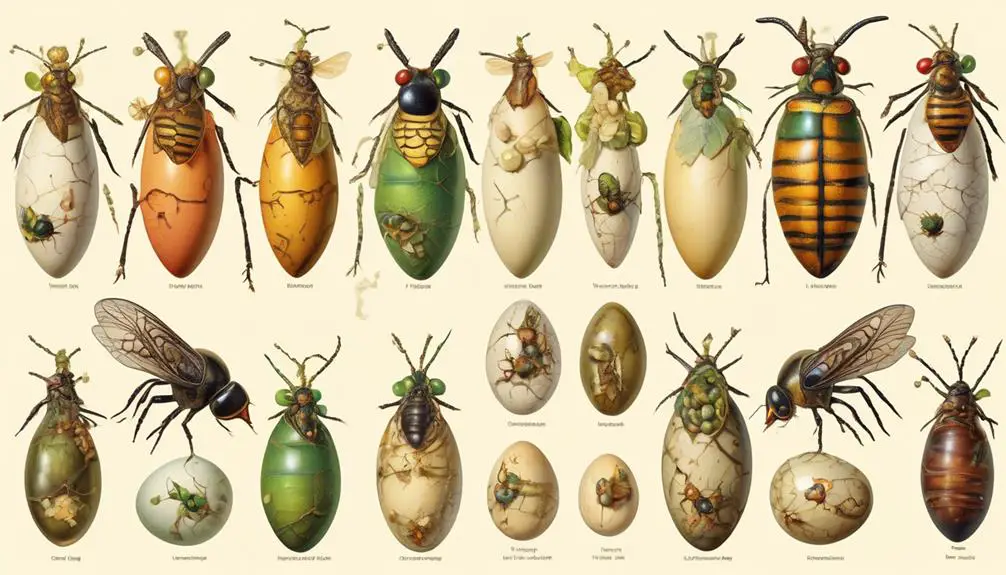
Now that you're familiar with the cunning behavior of Leafcutter Cuckoo Bees, let's explore their life cycle, which is just as intriguing and tightly woven into their parasitic lifestyle. Instead of building their own nests, these bees lay their eggs in the nests of other leafcutter bees. This strategy, known as "brood parasitism," allows them to save energy and resources.
Their life cycle begins when a female cuckoo bee infiltrates a host's nest. After killing or evicting the host's larvae, she lays her eggs and departs, leaving her offspring's upbringing to the host. The cuckoo bee larvae then feed on the host's pollen provisions while developing.
To provide a better understanding, here's a table detailing the major stages of their life cycle:
Stage | Description | Duration |
|---|---|---|
Egg | Laid in host's nest | 1-2 weeks |
Larvae | Feeds on host's pollen provisions | 2-3 weeks |
Adult | Parasitic behavior begins | Rest of life |
In short, Leafcutter Cuckoo Bees' life cycle is a fascinating blend of cunning, survival, and exploitation, a testament to the intricate complexity of nature's strategies.
Adaptation Strategies of Cuckoo Bees
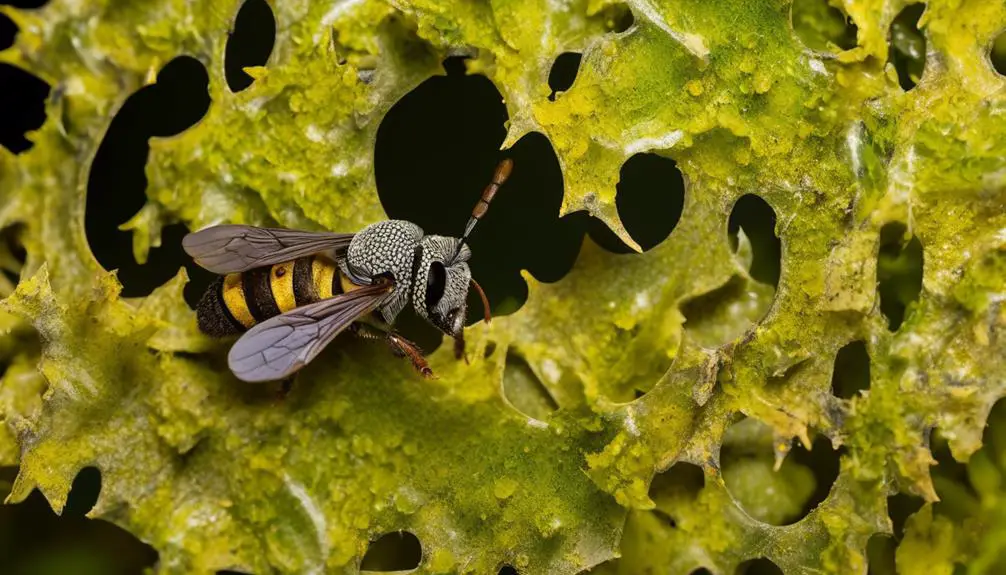
Numerous adaptation strategies equip the Leafcutter Cuckoo Bees for their parasitic lifestyle, each as fascinating and effective as the last. These bees don't build their own nests. Instead, they're designed to infiltrate the nests of other bees and lay their eggs there, a behavior known as brood parasitism.
So, how do they accomplish this?
Firstly, they've developed excellent stealth abilities. Their bodies are often darker and less hairy than their hosts, allowing them to blend in with the surroundings and avoid detection.
Secondly, they've adapted to lay eggs rapidly, often before the host bee has even realized it's been invaded. This gives the cuckoo bee's offspring a head start in the race for resources.
Furthermore, the cuckoo bee larvae have evolved sharp mandibles. Once hatched, they can kill the host's offspring if they haven't already hatched, ensuring they get all the food.
Finally, these bees have a reduced pollen-collecting apparatus. They've shed the tools necessary for nest-building and pollen collection, focusing instead on the skills necessary for their parasitic existence.
These adaptations highlight the ruthless efficiency of nature, and the lengths to which species will go to ensure their survival.
Interaction With Leafcutter Bees
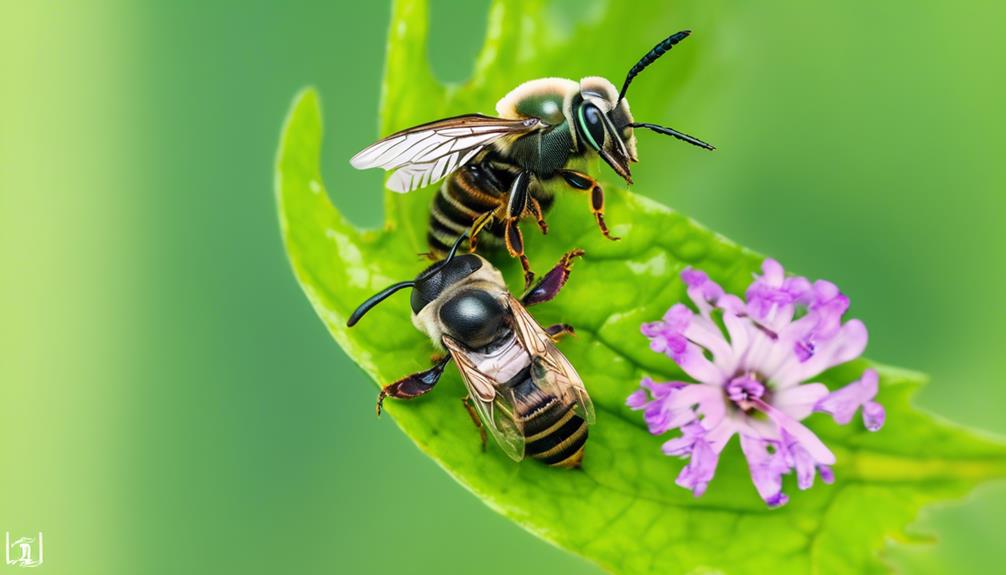
Often, Leafcutter Cuckoo Bees engage in a cunning game of deception and stealth with their Leafcutter Bee hosts, a subtle dance that reflects the complex interplay of survival strategies in nature. They exploit the hard work of the Leafcutters, infiltrating their nests and laying their eggs inside.
As a parasitic species, the Cuckoo Bee's survival depends on the Leafcutter's industry. You may wonder, how does this affect the Leafcutter population? It's a double-edged sword. On one hand, it places a burden on the Leafcutters, reducing their reproductive success. On the other, it could potentially control their population, maintaining a balance in the ecosystem.
Leafcutter Bees | Leafcutter Cuckoo Bees |
|---|---|
Industrious, hardworking | Stealthy, opportunistic |
Build own nests | Infiltrate others' nests |
Have own offspring | Lay eggs in others' nests |
Affected by intrusion | Depend on hosts for survival |
Population controlled by parasites | Help control host population |
Impact on Ecosystem and Biodiversity
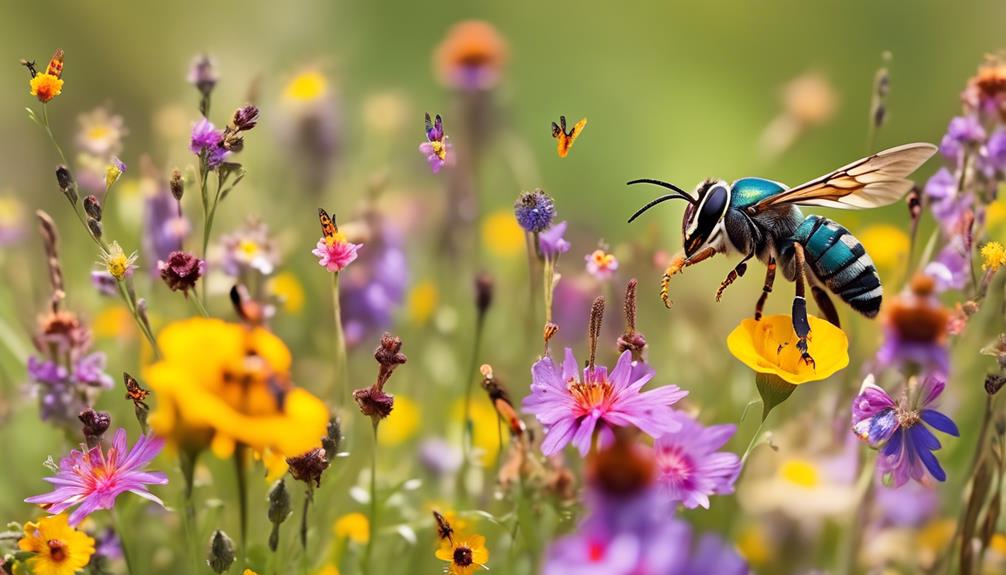
Diving into the realm of ecosystems and biodiversity, you'll find that the interaction between Leafcutter and Leafcutter Cuckoo Bees plays a critical role in maintaining a delicate balance. These bees are in a constant dance of symbiosis and competition, shaping their collective environment in profound ways.
Leafcutter Cuckoo Bees, by exploiting the hard work of Leafcutters, contribute to natural selection pressures. This fosters genetic diversity in Leafcutter populations as they evolve defenses against Cuckoo intrusion. This ongoing bee battle stimulates resilience and adaptability, crucial components of a healthy ecosystem.
Moreover, these bees indirectly affect plant biodiversity. Leafcutters, being effective pollinators, support plant reproduction. The presence of Cuckoo Bees, however, can potentially disrupt this pollination process. This subterfuge and disruption force plants to adapt, enhancing their survival strategies and promoting genetic diversity.
Yet, it's a delicate balance. Too many Cuckoo Bees could seriously undermine the Leafcutter population, disrupting pollination services and negatively impacting the ecosystem. It's a precarious equilibrium, demonstrating the complex interplay of nature and highlighting the importance of each creature in the grand scheme of biodiversity.
You see, even these tiny winged insects can have a massive impact on the world around them.
Conclusion
In closing, you've explored the intriguing life of the leafcutter cuckoo bee. You've seen its unique behaviors, lifecycle, and adaptations, along with its interactions with leafcutter bees and impact on the ecosystem.
This small insect plays a crucial role in biodiversity, hinting at the interconnectedness of life on Earth. It's a testament to the fact that even the tiniest creatures can have profound effects on our world.
Stay curious, and keep exploring the wonders of nature!

